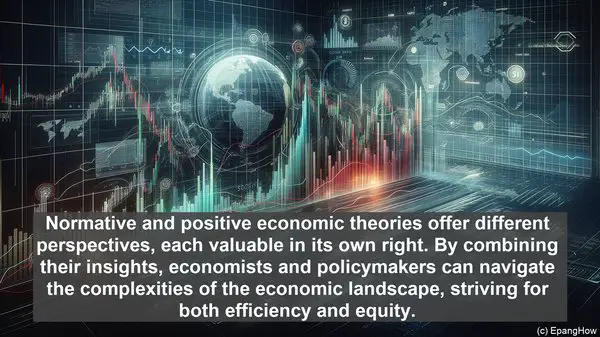Introduction: The Dual Perspectives of Economic Theories
Welcome to our exploration of normative and positive economic theories. While both offer valuable insights, they differ in their approach and purpose. Let’s dive deeper into their distinctions and significance.
Normative Economic Theories: The World of ‘Should’
Normative economic theories are concerned with ‘what should be.’ They focus on value judgments, aiming to prescribe the ideal economic conditions. These theories often involve subjective opinions and personal beliefs, making them inherently influenced by societal, cultural, and political factors.
Applications and Limitations of Normative Theories
Normative theories find extensive use in policy-making and governance. By providing a framework for desirable economic outcomes, they guide decision-makers in shaping regulations and interventions. However, their subjective nature can also lead to divergent opinions, making consensus challenging to achieve.
Positive Economic Theories: The World of ‘What Is’
In contrast to normative theories, positive economic theories focus on ‘what is.’ They aim to describe and explain economic phenomena based on empirical evidence and data. By adopting a scientific approach, these theories strive for objectivity and reproducibility.

Applications and Limitations of Positive Theories
Positive theories serve as a foundation for economic analysis, providing insights into market behavior, consumer choices, and macroeconomic trends. Their reliance on data and evidence enhances their credibility. However, they may not address normative concerns, such as issues of equity or fairness.
The Interplay: Normative and Positive Theories in Practice
While normative and positive theories are distinct, they often intersect in real-world scenarios. Decision-makers may rely on positive theories to understand the current state of affairs, while normative theories shape their vision for the future. This interplay ensures a holistic approach to economic decision-making.

